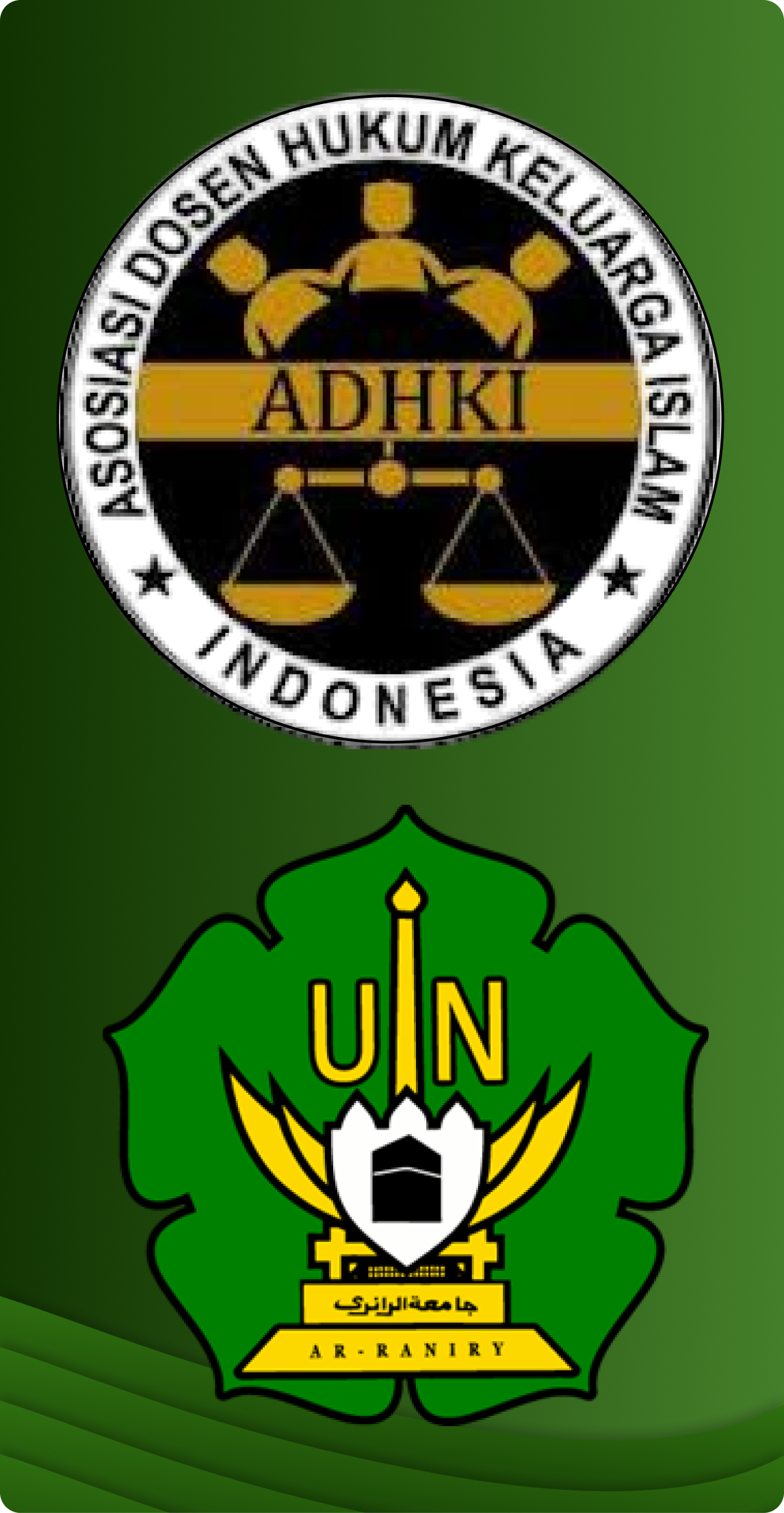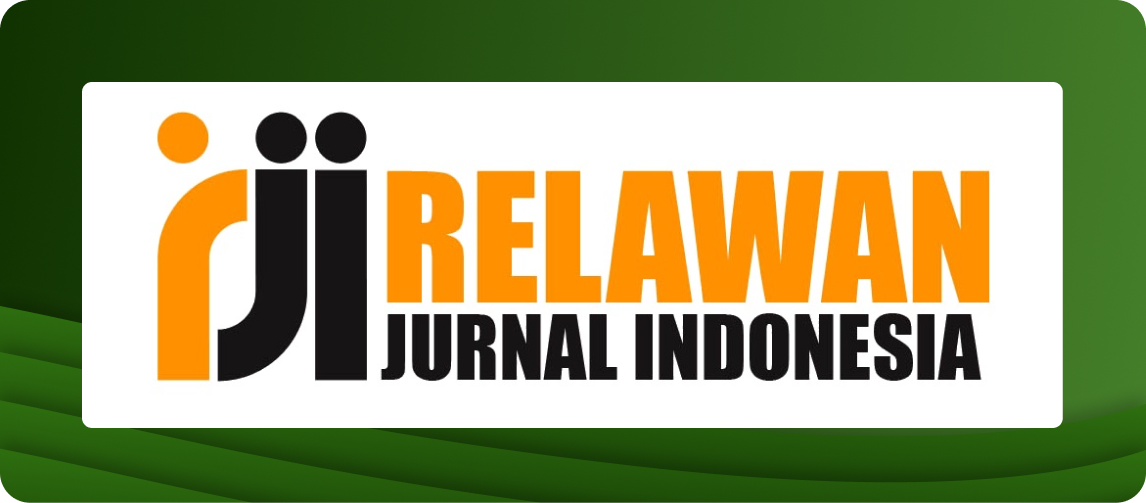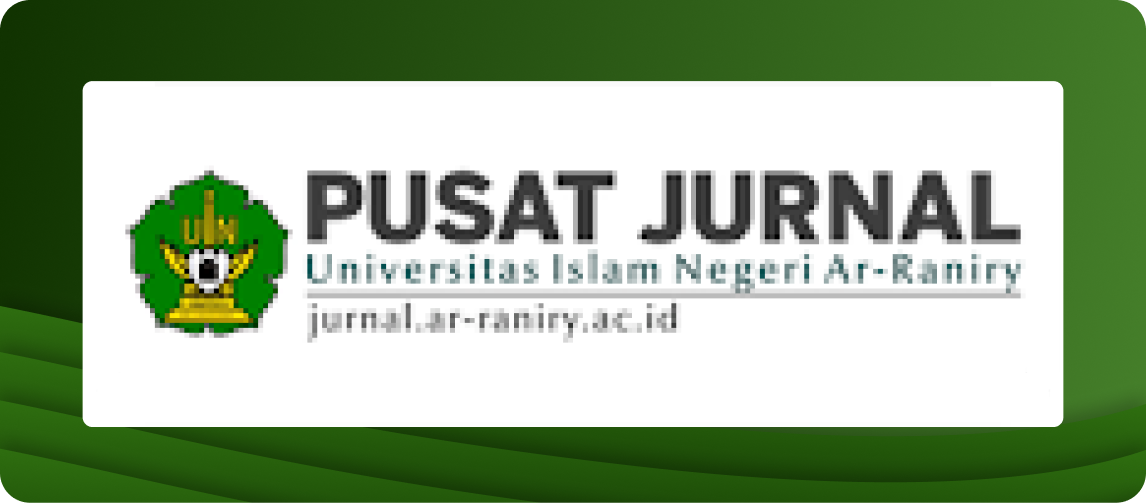Teungku Inong and Digital Da'wah in Aceh
Balancing Social Media, Career, and Family through an Islamic Communication Perspective
DOI:
https://doi.org/10.22373/gn56dh46Keywords:
Teungku Inong, social media, family, social roles, female da'wahAbstract
The rise of social media has created new opportunities for female preachers in Aceh, known as Teungku Inong (female clerics), to disseminate religious teachings in broader, more inclusive, and interactive ways. This development marks a significant shift in women's roles within digital da'wah (Islamic preaching), while simultaneously presenting new challenges particularly in balancing their public responsibilities as religious leaders with their private roles within the family. This study examines the impact of social media engagement on the family life of Teungku Inong, focusing on the dynamics of their dual roles and the strategies employed to navigate the demands of both professional and domestic spheres. Utilizing a qualitative case study approach, the research centers on female clerics in North Aceh and draws on theories of social roles and Islamic communication. Data were collected through in-depth interviews and content analysis of their social media presence. The findings reveal that the ability of Teungku Inong to manage dual responsibilities is strongly supported by both emotional and technical assistance from family members, particularly husbands and siblings. Key strategies include disciplined time management, open family communication, and the adaptive use of digital tools to facilitate da'wah activities without compromising domestic obligations. Sociologically, this study highlights the essential role of family support and digital literacy in enabling female preachers to thrive in the digital era. From the perspective of Islamic communication, the emergence of female clerics utilizing social media as a medium for da'wah represents a progressive development in both the professionalization of da'wah and the evolving roles of women in Islamic discourse. These findings contribute to a deeper understanding of women's participation in digital religious spaces and the negotiation of work–family balance in socio-religious contexts
References
Journal and Books
A. Samad, Sri Astuti., “Peran Perempuan Dalam Perkembangan Pendidikan Islam di Aceh (Kajian Terhadap Kontribusi Wanita dalam Tinjauan Sejarah),” Jurnal al-Maiyyah 9, No. 2 (2016).
Abdul Manan, Teungku Inong & Tradisi Pengajian Di Aceh, Banda Aceh: Lembaga Naskah Aceh, 2017.
Ahmad, Nurliati, et.al., Menelusuri Lanskap Kontemporer: Muslimat Al Washliyah Dalam Islam Dan Masyarakat (YPM Publishing, 2023)
Aksenta, Almasari, et.al., Literasi Digital: Pengetahuan & Transformasi Terkini Teknologi Digital Era Industri 4.0 Dan Sociaty 5.0 (PT. Sonpedia Publishing Indonesia, 2023)
Baskara, Titus Theo Yoga, and Qosda Muhdi Umar Umaya, Karya Kreatif Era Pandemi (SCU Knowledge Media, 2021).
Bhatia, Kiran Vinod, ‘Social Media as Online Archives: Inserting Religious Identities within Educational Spaces in India’, Contemporary South Asia 29, No. 2 (2021). doi:10.1080/09584935.2020.1804839.
Boyd, Danah, It ’ s Complicated : The Social Lives of Networked Teens It ’ s Complicated (Yale University Press, 2014), doi:10.12987/9780300166439.
Burke, Moira, Robert Kraut, and Cameron Marlow, ‘Social Capital on Facebook: Differentiating Uses and Users’, Conference on Human Factors in Computing Systems - Proceedings 2011. Doi:10.1145/1978942.1979023.
Campbell, Heidi, When Religion Meets New Media (Routledge, 2010)
Campbell, Heidi A, Digital Creatives and the Rethinking of Religious Authority (Routledge, 2020)
Campbell, Heidi A., and Oren Golan, ‘Creating Digital Enclaves: Negotiation of the Internet among Bounded Religious Communities’, Media, Culture and Society 33, No. 5 (2011). doi:10.1177/0163443711404464
Darwin, Rizkika Lhena, and Haryanto, ‘Women Candidates and Islamic Personalization in Social Media Campaigns for Local Parliament Elections in Indonesia’, South East Asia Research, 29, No. 1 (2021). doi:10.1080/0967828X.2021.1878928
Ellison, Nicole B., et.al., ‘The Benefits of Facebook “Friends :” Social Capital and College Students ’ Use of Online Social Network Sites, Journal of Computer-Mediated Communication The, 12 (2017). doi:10.1111/j.1083-6101.2007.00367.x
Fabriar, Silvia Riskha, Dakwah Di Era Digital: Potret Aktivitas Dakwah Nawaning (Penerbit NEM, 2024)
Fadli, Adi, ‘Transformasi Digital Dan Moderasi Beragama: Memperkuat Ummatan Wasathan Di Indonesia’, Schemata: Jurnal Pasca Sarjana IAIN Mataram 12, No. 1 (2023).
Fajrussalam, Hisny, and others, ‘Penggunaan Media Sosial Sebagai Sarana Pengembangan Dakwah Islam’, Innovative: Journal Of Social Science Research 3, No. 2 (2023).
Gaffari, Muhammad, ‘Persepsi Dan Pemaknaan Anak Muda Terhadap Tayangan Konten Pemuda Tersesat Di Channel YouTube Majelis Lucu Indonesia.’, Medkom (Jurnal Media Dan Komunikasi) 3, No. 1 (2022)
Goffman, Erving, The Presentation of Self in Everyday Life (University of Edinburgh, 1956)
Hasan, Nur, Khazanah Ulama Perempuan Nusantara (Yogyakarta: IRCiSoD, 2023)
Hertlein, Katherine, and Markie Twist (Blumer), The Couple and Family Technology Framework: Intimate Relationships in a Digital Age, 2013, doi:10.4324/9780203081815
Hjarvard, Stig, “The Mediatisation of Religion: Theorising Religion, Media and Social Change,” Culture and Religion 12, No. 2 (2011). doi:10.1080/14755610.2011.579719
HS, Abdul Sahid, ‘Retorika Dakwah Ustadz Das’ad Latif: Analisis Strategi Dakwah Populer’
Jinan, Mutohharun, ‘Intervensi New Media Dan Impersonalisasi Otoritas Keagamaan Di Indonesia’, Jurnal Komunikasi Islam 3, No. 2 (2013).
Lailatussaadah, Lailatussaadah, ‘Kualitas Teungku Inong Sebagai Role Model Islami Bagi Masyarakat Kecamatan Delima Kabupaten Pidie’, Gender Equality: International Journal of Child and Gender Studies 1, No. 2 (2015).
Lengauer, Dayana, ‘Sharing Semangat Taqwa: Social Media and Digital Islamic Socialities in Bandung’, Indonesia and the Malay World 46, No. 134 (2018). doi:10.1080/13639811.2018.1415276.
Makhmudah, Siti, Medsos Dan Dampaknya Pada Perilaku Keagamaan Remaja (Bogor: Guepedia, 2019)
Meilinda, Nuly, Febrimarani Malinda, and Sari Mutiara Aisyah, ‘Literasi Digital Pada Remaja Digital (Sosialisasi Pemanfaatan Media Sosial Bagi Pelajar Sekolah Menengah Atas)’, Jurnal Abdimas Mandiri 4, No. 1 (2020)
Meilinda, Nurly, ‘Social Media On Campus: Studi Peran Media Sosial Sebagai Media Penyebaran Informasi Akademik Pada Mahasiswa Di Program Studi Ilmu Komunikasi FISIP UNSRI’, The Journal of Society & Media 2, No. 1 (2018). Doi:10.26740/JSM.V2N1.P53-64
Noor, Noraini M., ‘Women, Work and Family: Emerging Social Issues and Their Implications on Social Work Education’, Asia Pacific Journal of Social Work and Development 6, No. 2 (1996). doi:10.1080/21650993.1996.9755736.
Fordjour, Osei and Nana Kwame, “Social Media, Personalization, Visuals, and Strategic Political Communication: The Case of an African Vice President’s Image-Construction on Twitter,” International Journal of Strategic Communication 18, No. 4 (2024). doi:10.1080/1553118X.2024.2330416.
Rahmaniar, Anastasya, et.al., Bunga Rampai Isu-Isu Komunikasi Kontemporer 2023 (PT Rekacipta Proxy Media, 2023).
Silitonga, Paulina, ‘Pengaruh Positif Dan Negatif Media Sosial Terhadap Perkembangan Sosial, Psikologis, Dan Perilaku Remaja Yang Tidak Terbiasa Dengan Teknologi Sosial Media Di Indonesia.’, Jurnal Pendidikan Sosial Dan Humaniora 2, No. 4 (2023).
Siswantara, Yusuf, Keluarga Nazaret: Teladan Karakter Dan Iman Dalam Keluarga Modern (Jakarta: Kanisius, 2023).
Sumarlan, Iman, ‘Cyber Public Relations Muhammadiyah Melalui Media Sosial’, Dakwah Muhammadiyah Dalam Masyarakat Digital: Peluang Dan Tantangan.
Syarofi, Ahmad, ‘Komunikasi Dakwah Virtual Pesantren: Analisis Isi Pesan Dakwah Pada Akun Instagram@ Assalafie_babakan_ciwaringin’ (UIN Sunan Gunung Djati Bandung, 2023)
Tamimy, Muhamad Fadhol, Sharing-Mu, Personal Branding-Mu: Menampilkan Image Diri Dan Karakter Di Media Sosial (VisiMedia, 2017).
Thoha, Perdian Muhamad, et.al., “Perubahan Komunikasi Orang Tua Terhadap Anak Di Era Digital,” Student Scientific Creativity Journal 1, No. 4 (2023).
Turner, Bryan S., “Religious Authority and the New Media,” Theory, Culture & Society 24, No. 2 (2007). doi:10.1177/0263276407075001
Ulfa, Maulida, “Menjaga Moderasi Beragama Di Era Digital: Tantangan Dan Strategi Menghadapi Teknologi,” Book Chapter of Proceedings Journey-Liaison Academia and Society 1, No. 1 (2024).
Ulfah, Maulidya, et.al., Digital Parenting: Bagaimana Orang Tua Melindungi Anak-Anak Dari Bahaya Digital? (Tasikmalaya: Edu Publisher, 2020).
Ummah, Nurul Hidayatul, ‘Pemanfaatan Sosial Media Dalam Meningkatkan Efektivitas Dakwah Di Era Digital’, Jurnal Manajemen Dakwah 11, No. 1 (2023)
Woodward, Scott, and Royce Kimmons, ‘Religious Implications of Social Media in Education’, Religion and Education 46, No. 2 (2019). doi:10.1080/15507394.2018.1510249.
Yassin, Ahmed, and others, ‘Impact of Social Media on Public Fear, Adoption of Precautionary Behaviors, and Compliance with Health Regulations during COVID-19 Pandemic’, International Journal of Environmental Health Research, 32, No. 9 (2022). doi:10.1080/09603123.2021.1935778.
Yuan, Mengyao, ‘A Private Sphere: Democracy in a Digital Age’, Democratization 19, No. 3 (2012). doi:10.1080/13510347.2012.674366
Zein, Mohamad Fadhilah, Panduan Menggunakan Media Sosial Untuk Generasi Emas Milenia
Zis, Sirajul Fuad, et.al., ‘Perubahan Perilaku Komunikasi Generasi Milenial Dan Generasi z Di Era Digital’, Satwika: Kajian Ilmu Budaya Dan Perubahan Sosial 5, No. 1 (2021)
Kirana, Dita and Endi Aulia Garadian, “Religious Trend in Contemporary Indonesia: Conservatism Domination on Social Media,” Studia Islamika 27, No. 3 (2020). DOI: https://doi.org/10.36712/sdi.v27i3.18823.
Kholili, M., et.al., “Islamic Proselytizing in Digital Religion in Indonesia: The Challenges of Broadcasting Regulation,” Cogent Social Sciences 10, No. 1 (2024). DOI:10.1080/23311886.2024.2357460.
Rohmatulloh, Dawam Multazamy, et.al., “Gus Baha, Santri Gayeng, and the Rise of Traditionalist Preachers on Social Media,” Journal of Indonesian Islam 16, No. 2 (2022). DOI: 10.15642/JIIS.2022.16.2.303-325.
Ni’am, Syamsun, “Pesantren: The Miniature of Moderate Islam in Indonesia,” Indonesian Journal of Muslem Societies 5, No. 1 (2015). DOI: https://doi.org/10.18326/ijims.v5i1.111-134.
Srimulyani, Eka, Teungku Inong Dayah: Female Religious Leaders in Contemporary Aceh in R. Michael Feener, et.al., Islam and the Limits of The State: Reconfigurations of Practice, Community and Authority in Contemporary Aceh, Brill: Leiden Studies in Islam and Society, 2016.
Muafiah, Evi, et.al., “Gendered Pesantren in Contemporary Indonesia: Female Agency, Institution, and Everyday Lives,” Qudus International of Islamic Studies 12, No. 1 (2024). DOI: http://dx.doi.org/10.21043/qijis.v12i1.19859.
Suyanto, Bagong dan Sutina, Metode Penelitian Sosial, Jakarta: Kencana, 2022.
Sugiyono dan Puji Lestari, Metode Penelitian Komunukasi, Bandung: Alfabeta, 2021.
Interview
Interview with Ummi Wahyuni, Teungku Inong di Aceh, May 13, 2024
Interview with Hendri Sartika, Suami Teungku Inong, May 13, 2024
Interview with Rasyidah, tokoh Perempuan Aceh, May 10, 2024.
Interview with Hendri Sartika, Suami Ummi Wahyuni, 13 May 2024.
Interview with Cut Bayu, Kakak Ummi Wahyuni, 13 May 2024
Downloads
Published
Versions
- 2025-06-30 (5)
- 2025-06-30 (4)
- 2025-07-06 (3)
- 2025-07-06 (2)
- 2025-06-30 (1)
Issue
Section
License
Copyright (c) 2025 Fitri Meliya Sari, Ahmad Tamrin Sikumbang, Rubino Rubino

This work is licensed under a Creative Commons Attribution-ShareAlike 4.0 International License.
Authors who publish in El-Usrah: Jurnal Hukum Keluarga agree to the following terms:
Authors retain copyright and grant the journal right of first publication with the work simultaneously licensed Attribution-ShareAlike 4.0 International (CC BY-SA 4.0) that allows others to share the work with an acknowledgment of the work's authorship and initial publication in this journal.
Authors are able to enter into separate, additional contractual arrangements for the non-exclusive distribution of the journal's published version of the work (e.g., post it to an institutional repository or publish it in a book), with an acknowledgment of its initial publication in this journal.
Authors are permitted and encouraged to post their work online (e.g., in institutional repositories or on their website) prior to and during the submission process, as it can lead to productive exchanges, as well as earlier and greater citation of published work. (See The Effect of Open Acces)

















